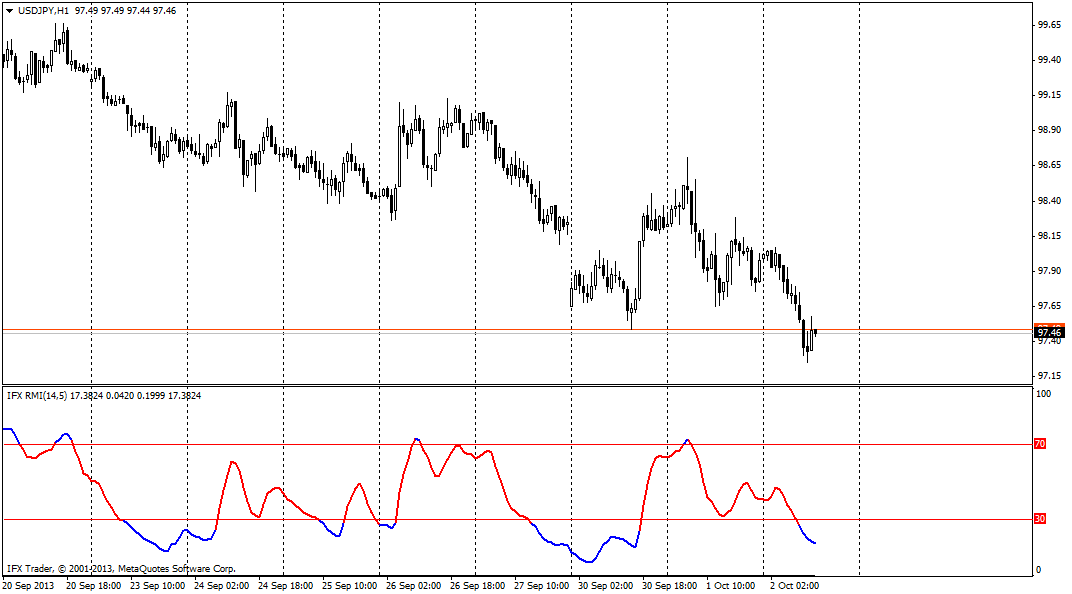The RMI indicator was introduced by Roger Altman. In February 1993, it was presented in the Technical Analysis of Stocks & Commodities magazine. The main aim of the indicator is to improve the data provided by the classical RSI indicator if the price reaches oversold/overbought areas.
Formula
RMI = 100 * N / (H + B), where
N – the number of days;
H – the sum of fluctuations of positive closing prices for the period between today and N days ago;
B – the sum of fluctuations of negative closing prices for the period between today and N days ago.
Trading use
Being a classical oscillator of the technical analysis, the RMI indicator enables the user to detect the following possibilities to use in trading phenomena:
1. Highs and lows
When the indicator reaches and crosses the 70% level in the downtrend, it is a significant signal that the price may continue a downward movement. In this context, the RMI indicator for MetaTrader points to the oversold area and after the area is reached, a decline may start.
When the indicator reaches and crosses the 30% level in the uptrend, it is a sure signal that the price has finished formation of the correction and now it is able to continue moving upwards. In this situation the assets should be bought.
2. Price patterns
The RMI indicator may form such graphical patterns as triangles, flags, and head and shoulders, which a trader can regard even if this pattern was not formed on the price chart.
3. Divergence/Convergence signal
As an oscillator, the indicator allows the user to observe signals of convergence/divergence on the indicator line in comparison with the price movements, and such signals are the most relevant to form a decision, as RMI is a very strong indicator of such type of signals.

Parameters of InstaForex RMI indicator
RMIperiod = 14
MOMperiod = 5






